Featured image by thriol via Flickr
Ruggedly wild, inherently spiritual, and filled with rich ethnic culture and untamed beauty, Tibet has called to adventurers for generations. But, they don’t call it the ‘roof of the world’ for nothing. With its remote location, extreme climate, and geographic environment, Tibet had been cut off from the world, inaccessible to all but the most intrepid explorers for centuries. For those that did want to make the journey, flying was generally the only option. However, due to air travel’s low capacity and high cost, tourism in this remote corner of China was, largely, prohibitive.
That is, until the Qinghai-Tibet Railway was constructed in 2006, transforming Tibet’s travel industry – and wanderlusters – forever.
They Said It Couldn’t Be Done
There was once a time when people believed that Tibet would never be able to have a railway. Like Kenya’s ‘Lunatic Line‘ – where laborers faced the dangers of angry tribesmen, malaria-rife swamps, and hungry lions – and Argentina’s high-altitude, bridge-riddled ‘Train to the Clouds’, the conditions through which a Tibetan railway would run were deemed by many to be too dangerous. Unsurprisingly, the Chinese saw it a different way.
That’s not to say that it wasn’t without its challenges. With 960km, or about 596 miles, of the track resting at a lofty height of 4,000 meters and some altitudes stretching over 5,000 meters above sea level, the Qinghai-Tibet Railway is the world’s highest train route (although soon to be unseated by India’s Bilaspur-Manali-Leh railway line in 2022). As a result, the railway’s engineers had three main obstacles to consider: a dangerous lack of oxygen, a fragile ecosystem, and permafrost.
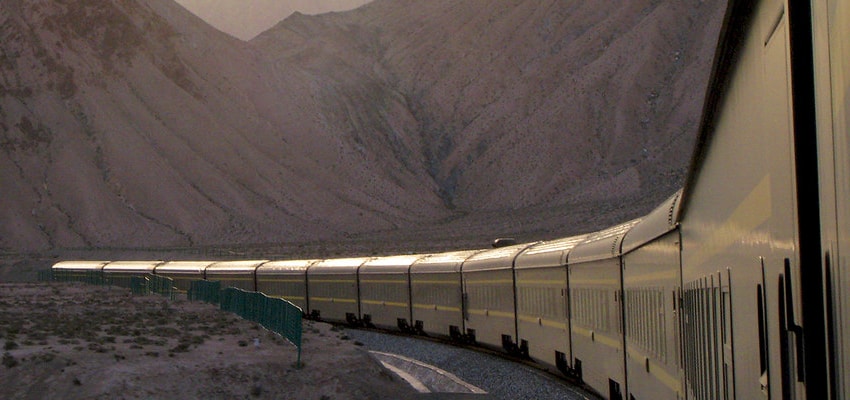
Qinghai-Tibet Railway. Image by thriol via Flickr
Where did all the oxygen go?
At 4,000m above sea level, the air is 50% thinner, making breathing much more difficult, let alone hard labor. In spite of these odds, no workers died from altitude sickness. This is an impressive feat in and of itself, given that some people can suffer from related sicknesses simply by going to that altitude and relaxing. To fight the issue of thin air, oxygen-generation stations were placed throughout the route along with 600 medical professionals who were stationed at clinics every 10 kilometers alongside the workspaces. Breaks were given liberally, and some workers were even provided with oxygen tanks to help them while they worked.
A fragile ecosystem
In addition to the high altitude, the ecosystems through which the railway runs are notoriously fragile. Noise, vibration, and pollution caused not just by construction, but regular rail traffic overall, can be disruptive at best and catastrophic at worst. Fortunately, designers and engineers, recognizing the inherent value of the preservation of the biosphere, made protecting the delicate environmental balance top priority, investing some RMB1.54 billion (over $216 million) in the endeavor.
All wastewater was thoroughly treated before being discharged. Passageways for wild animals (such as the Tibetan antelope) were even built, charting a path so that it would intrude as little as possible for sensitive species. This consideration forced the originally planned course to be aborted because it would pass through reserves dedicated to the black-necked crane. Construction was even halted during the mating season for the Tibetan antelope. Where impossible to fully avoid, interference was minimized as much as possible. Today, trains rumble across 675 bridges designed to prevent damage to the landscape, cars are heated by eco-friendly energy sources, and fences prevent wildlife from crossing the tracks and entering harm’s way.
Perma-what?
The final hurdle that made the Qinghai-Tibet Railway such an engineering marvel is that it had to be able to withstand the yearly expansion-contraction cycles of permafrost soil. Basically, how to build a track on ground that was going to change year in and year out?
Again, this obstacle was solved by building bridges. Whenever possible, the savvy engineers elevated the track over the permafrost, or created stone embankments to increase air circulation. In short, although the odds were stacked against them, the railway’s persistent and inventive engineers found a way to adequately address every issue.
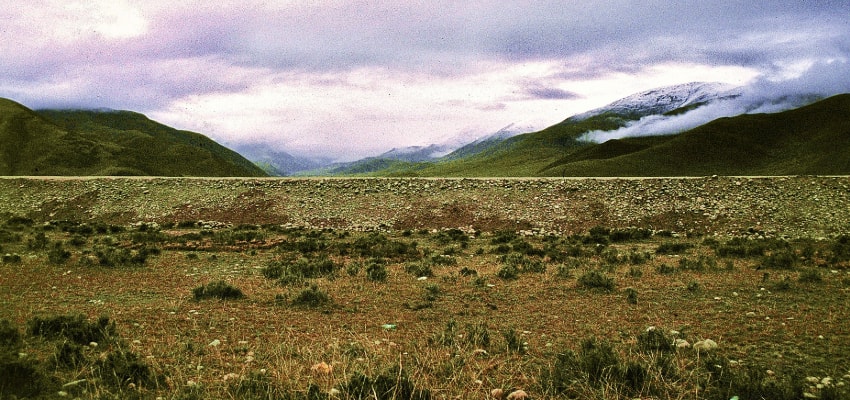
Qinghai-Tibet Railway Under Construction. Image by Erik Törner via Flickr
On the ‘Sky Road’ today
Stretching from Xining in Qinghai Province, cutting across the barren grasslands of the Tibetan Plateau, and mounting the forbidding winter fairyland of the Kunlun Mountains before arriving in Lhasa, the Qinghai-Tibet Railway is more than just a train from Point A to Point B. It’s a transporting, both literally and figuratively, journey filled with untouched, achingly beautiful vistas.
Only a day in length (20 hours 55 minutes to be precise), you’d be hardpressed to find a moment worth falling asleep for, as tempting as it is to nod off to the gentle rocking and click-clack of the train. However, if you do still plan on getting some shut-eye, here are some stretches that are more than worth waking up (or drinking a lot of coffee) for:
1. Chaerhan Salt Lake
750km from Xining, Chaerhan Salt Lake is the first landmark travelers should be sure to awake for. The largest salt lake in China, and one of the most famous in the world, it is so crystal clear that it appears to be a massive, natural mirror.
2. Kunlun Mountains
The first mountain range you’ll come across is also the largest mountain system in China, reaching heights as high as 6,000 meters above sea level. Given that it’s the largest system of mountains in China, it’ll be hard to sleep through all of them.
3. Kunlun Mountain Pass
Roughly 160km from Golmud, the second-largest city in the Tibetan Plateau, you’ll come to the Kunlun Mountain pass. The sudden rise from 2,800 meters to 4,700 meters above sea level, causes the temperature to plummet, creating what can only be described as a perpetual winter wonderland.
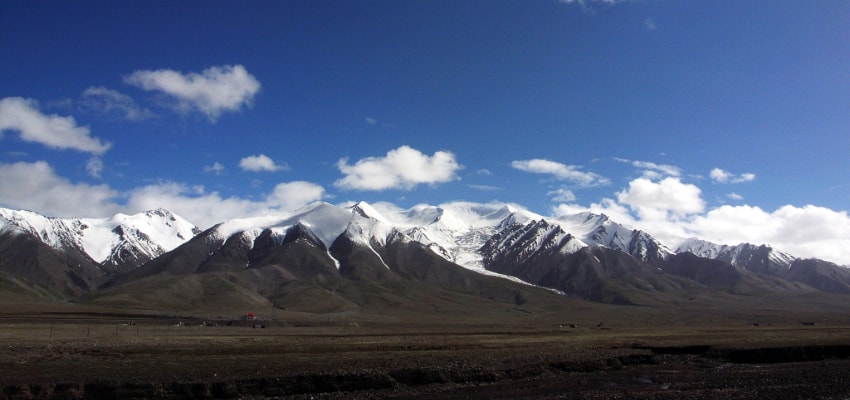
Kunlun Mountains. Image by Chen Zhao via Flickr
4. Hoh Xil Depopulated Area
In this region, you’ll have a good chance of spotting Tibetan antelope running alongside the train if you keep your eyes sharp. There are plenty of other animals to be seen here, including wild donkeys, yaks, white-lipped deer, snow leopards, and many more. Don’t worry about missing it though – at 4,500 square kilometers in size, you’re unlikely to miss it even if you do decide to make time for a cat nap.
5. Tanggula Mountain Pass
Previously considered an invisible barrier to Tibet because of its altitude and terrible weather, the Tanggula Mountain Pass is another can’t-miss piece of natural beauty. You’ll likely see naturally formed ice sculptures and even some yak drinking from the rivers.
6. Qiangtang Grassland
Tibet is like the Texas of China – everything there is massive. The Qiangtang Grassland is one of the five largest pastures in China. It has an abundance of plants, wild animals, including yak, sheep, and nomad camps.
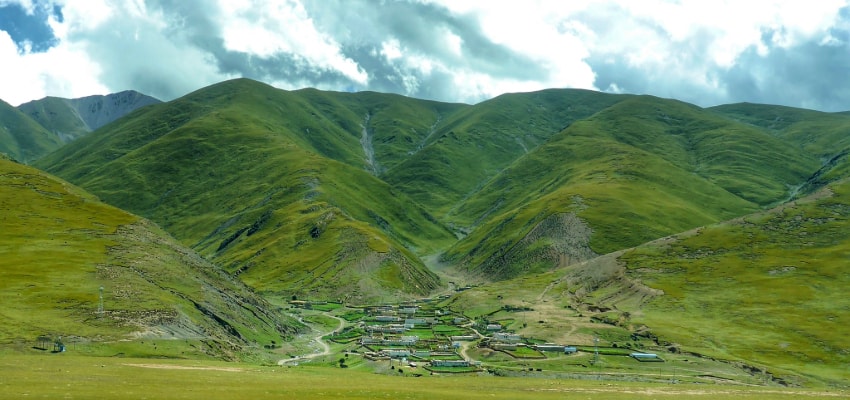
Along the Qinghai-Tibet Railway. Image by travel oriented via Flickr
What it’s like on the train
When not gazing in awe out the windows, riders on the train are able to experience some pretty impressive features, all provided to make the journey as comfortable and safe as possible. Each car is pressurized (much like the cabin of an aircraft) and equipped with an oxygen supply system to help prevent any travelers from feeling sick or light-headed, cabins come with private oxygen-dispensing outlets, and each train has an on-site doctor just in case.
Like most trains in China’s network, travelers have access to hot water dispensers, a restaurant car, and both squat and sit-down toilets. Be prepared to have your translation app at the ready though, as most train attendants don’t speak English. And as with other China trains, riders have the option of booking one of three classes of seats:
- Hard seat: Cushioned seats (despite the name) that, while cheap, can be cramped and uncomfortable over long journeys
- Hard sleeper: Six beds stacked in half-opened compartments and equipped with thin mattresses and space for luggage above the window
- Soft sleeper: Four beds in large, lockable, and private compartments and equipped with thick-cushioned mattresses
Additionally, all train cars have environmentally friendly toilets, wastewater deposit tanks, and garbage treatment facilities to help minimize any environmental impacts.
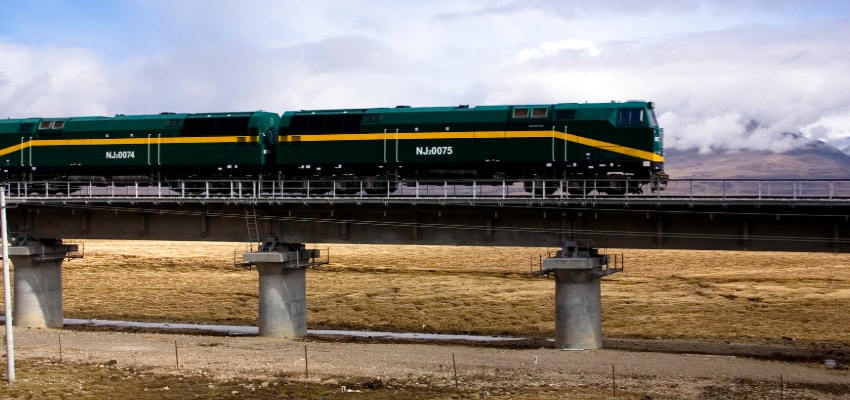
Qinghai-Tibet Railway. Image by Henry Chen via Flickr
How to Do It
After all this, it should come as no surprise that the Qinghai-Tibet Railway is quite popular, especially during the months of July and August. As a result, we highly recommend booking as far in advance is possible, either through their website (chinatibettrain.com) or through a travel agent or tour operator (like us!).
Plus, since this is Tibet we’re talking about, there are also a number of permits that need to be secured – again, we’re here to help. And trust us, this little bit of effort is more than worth the reward of the breathtaking scenery that will linger in your memories long after the trip ends.
